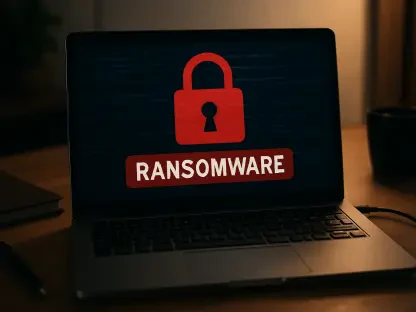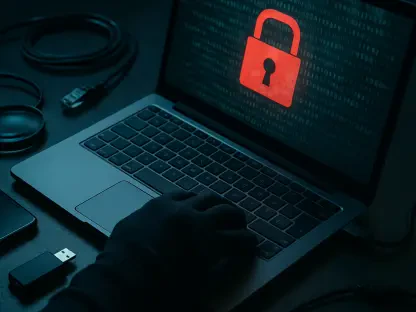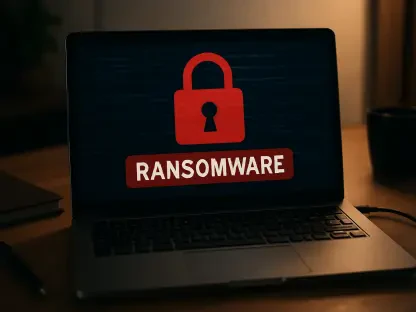The realm of cybersecurity has witnessed a surge of intricate phishing attacks since March aimed at individuals and NGOs linked to Ukraine, specifically exploiting Microsoft 365’s OAuth workflows. These attacks are part of a broader campaign orchestrated by Russian-linked threat actors, identified by cybersecurity firm Volexity as UTA0352 and UTA0355. Utilizing advanced social engineering techniques, attackers impersonate European diplomats and Ukrainian officials to target human rights advocates and NGO personnel. They initiate conversations using Signal or WhatsApp, posing as European authorities proposing meetings on topics concerning Ukraine. This deceptive strategy ultimately leads victims to Microsoft OAuth login links, where they are tricked into sharing authentication codes.
Exploiting OAuth Workflows
Methods of Attack
Once victims fall prey to the phishing schemes and provide authentication codes, attackers leverage these codes to obtain access tokens capable of unlocking Microsoft 365 data, thereby exposing sensitive emails and files. There have been notable instances where phishing links masqueraded as legitimate Microsoft login pages, yet resulted in attackers acquiring crucial codes to access users’ data. One complex scenario involved Visual Studio Code hosted online, encouraging victims to unwittingly initiate the OAuth process. Another tactic saw the use of a compromised Ukrainian government email, which distributed conference invitations and requested recipients to authenticate through Microsoft URLs, thereby enabling attackers to register new devices and gain access to email data.
The sophistication of these methods lies in their ability to create seemingly genuine interactions, making them particularly challenging to detect. By posing as trusted entities and mimicking official communication pathways, attackers significantly increase the likelihood of their schemes being successful. These incidents underscore the need for organizations and individuals, particularly those involved in sensitive geopolitical contexts, to remain vigilant and informed about emerging phishing tactics that continually evolve and adapt.
Implications on Security
The exploitation of Microsoft’s trusted infrastructure by attackers highlights a significant vulnerability in traditional security measures. This reliance on legitimate platforms for deception reveals an alarming trend where typical security protocols may fall short. Volexity emphasizes several key indicators of potential compromise, including abnormal OAuth login activity associated with Visual Studio Code, suspicious URLs, newly registered devices linked to proxy IP addresses, irregular two-factor authentication requests, and app IDs that do not match typical user clients. Despite these indicators, the attribution of these campaigns to Russian actors is assessed with medium confidence, suggesting a level of uncertainty but nevertheless urging caution and preparedness.
The implications of these findings extend beyond immediate threats to the targeted organizations and individuals. They suggest broader cybersecurity challenges wherein attackers capitalize on established and trusted systems, necessitating enhanced security protocols that can identify and mitigate these sophisticated phishing attempts. As digital interactions continue to be integral to professional and personal communications, understanding the nuances of these threats is critical to developing robust defense strategies.
Addressing the Phishing Challenge
Enhancing Protective Measures
Addressing these sophisticated phishing attacks requires a multi-faceted approach that goes beyond conventional security practices. Organizations and individuals must cultivate a culture of cybersecurity awareness, particularly in environments prone to geopolitical tensions like those surrounding Ukraine. A thorough understanding of phishing tactics, together with regular security training, can significantly reduce susceptibility to these schemes. Implementing advanced authentication mechanisms, scrutinizing communication channels, and maintaining updated security protocols are imperative steps in cultivating resilience against evolving threats.
Moreover, cybersecurity firms and institutions should prioritize collaborative efforts to develop innovative solutions that counteract phishing attempts effectively. Leveraging data-driven insights and sophisticated algorithms can enhance detection capabilities, enabling rapid identification and response to threats. Additionally, fostering cooperation between governmental agencies and private sector entities can contribute to a comprehensive security framework that addresses both immediate and long-term cyber risks.
Future Considerations
Since March, the cybersecurity landscape has seen complex phishing attacks targeting individuals and organizations affiliated with Ukraine. These attacks specifically exploit Microsoft 365’s OAuth workflows and are part of a larger campaign tied to Russian-associated threat groups, identified by cybersecurity company Volexity as UTA0352 and UTA0355. These attackers use sophisticated social engineering tactics, impersonating European diplomats and Ukrainian officials to deceive human rights advocates and NGO staff. They start conversations on platforms like Signal or WhatsApp, pretending to be European authorities planning meetings on Ukraine-related issues. This method leads victims to Microsoft OAuth login pages, where they are duped into handing over authentication codes. By doing so, attackers can gain unauthorized access, compromising security and potentially causing harm to those engaged in efforts surrounding Ukraine. Such activity underscores the importance of heightened vigilance and robust cybersecurity measures for those involved.









